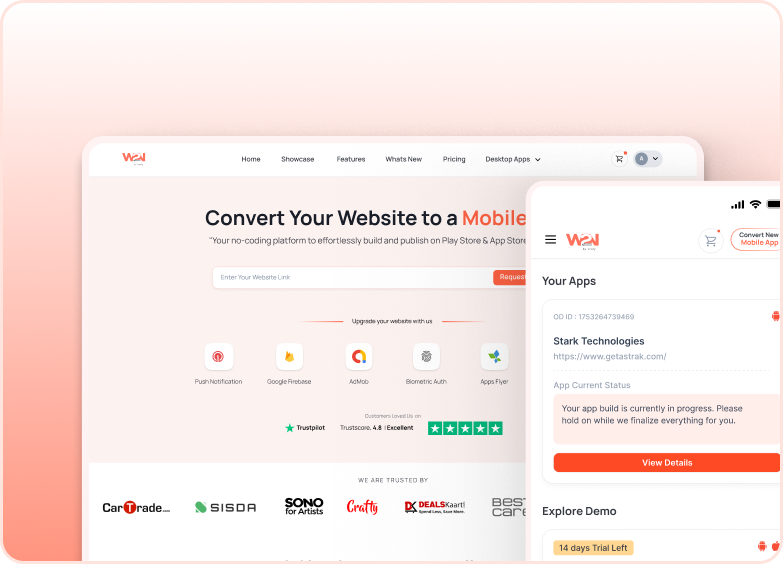Deep Linking
Deep Linking enable a smooth user experience by opening specific app pages when users click on corresponding links. Configuring Deep Linking ensures that clicking an http:// or https:// link that matches a specified domain opens the link within your app instead of default mobile browser. It's recommended to add your hostname with and without the "www" prefix.
As your will click on "Configure". A pop-up will appear.

Now, Add URL matching a specified domain to open the link within your app instead of your default mobile browser.

Android Configuration
Default Behavior:
- In Android, Deep Linking usually display a disambiguation dialog, to prompt users to select either to open the link in your app or in a default mobile browser.
App Link Verification:
- Enable App Link Verification, To bypass the disambiguation dialog prompt and open links directly in your app. This requires adding a configuration file to your website at "/.well-known/assetlinks.json" to prove you control the reference domain.
Steps for Configuration
1. Create the Assetlinks File:
- Add a "/.well-known/assetlinks.json" file to your website. This file should reference your app's package name and include a SHA-256 fingerprint of your app's signing certificate.
Example of assetlinks.json:
[
{
"relation": ["delegate_permission/common.handle_all_urls"],
"target": {
"namespace": "android_app",
"package_name": "com.example.yourapp",
"sha256_cert_fingerprints": ["<your_sha256_fingerprint>"]
}
}
]2. Verify Configuration:
- Visit Google’s Statement List Generator and Tester (opens in a new tab).
- Enter your app package name and the SHA-256 fingerprint from the assetlinks.json, then click "Test Statement" to ensure it's configured correctly.
3. Repeat for each Hostname:
- Perform the above steps for each hostname you intend to use.
iOS Configuration
Default Behavior:
- iOS always present a confirmation screen when a user clicks a Deep Linking.
Requirements:
1. Provisioning Profile:
- In the provisioning profile associated with your app ID, add "Associated Domains" under App Services.
2. Configuration File:
- Add an "/.well-known/apple-app-site-association" file to your website. This file must include your TEAMID from your Apple Developer account.
Steps for Configuration
1. Add Configuration File:
- Place the "/.well-known/apple-app-site-association" file on your website to prove domain ownership.
Example of apple-app-site-association:
{
"applinks": {
"apps": [],
"details": [
{
"appID": "TEAMID.com.example.yourapp",
"paths": [ "/path/to/content/*" ]
}
]
}
}2. Test Configuration:
- Test your association file using the AASA Validator (opens in a new tab).
iOS Tips:
-
Path Requirement:
- Deep Linking will not work unless a PATH is specified in the URL. For example, "http://example.com (opens in a new tab)" will NOT work, but "http://example.com/PATH (opens in a new tab)" will.
-
Multiple Subdomains:
- If your site uses multiple subdomains (e.g.,
example.com,www.example.com,support.example.com), each subdomain requires its own entry in the Associated Domains Entitlement and must serve its own/.well-known/apple-app-site-associationfile.
- If your site uses multiple subdomains (e.g.,
- Hosting Requirements:
- The "/.well-known/apple-app-site-association" file must be hosted with a "Content-Type: application/json" HTTP header, use "https://: with a valid SSL certificate, and return a "200 HTTP Status Code" with no redirects.
Apple Documentation:
- For detailed instructions, refer to Apple's Documentation for Universal Links (opens in a new tab) and Associated Domains (opens in a new tab).




